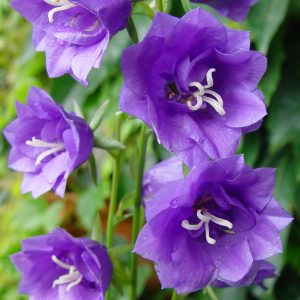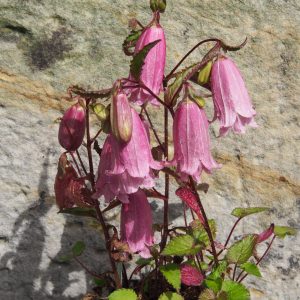"Let yourself be tempted by our bells!"
The motto has been on our bluebell collection for three years now and so far there has been no boredom. The world of bells and bells is so extensive that you can always explore new peripheral areas.
The variety ranges from delicate, mostly well-formed miniature bells, e.g. C. cochlearifolia, broad cupped flowers such as C. carpatica to rather curious sack shapes such as C. punctata. The play of colors delights friends of the delicate pastel colors as well as lovers of the loud, loud tones.
You can either opt for a collection of great game species or design your garden with the many great varieties of such well-known species as C. persicifolia or C. glomerata.
And then there are the many close relatives of bluebells, such as bell flowers (Adenophora), stone bells (Symphyandra) and tiger bells (Codonopsis).
There are bluebells for almost every garden location and the flowering series lasts from April to September. This usually only requires a well-drained soil with an adequate supply of nutrients. Depending on where they are in the wild, the species prefer dry or fresh soil. Less luck with bluebells is mostly due to too heavy, wet soil, too little food or the widespread snail plague. For very desperate plant lovers, the idea of a pot collection might help.
We hope you enjoy choosing from this extensive range her "bluebell lover"
There are bluebells for almost every garden location and the flower cluster lasts from April to September. This usually only requires a well-drained soil with an adequate supply of nutrients. Depending on where they live, the species prefer dry or fresh soil. Less luck with bluebells is mostly due to too heavy, wet soil, too little food or the widespread snail plague. For very desperate plant lovers, the idea of a pot collection might help.




